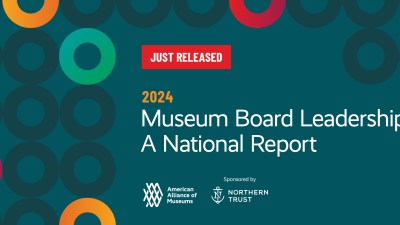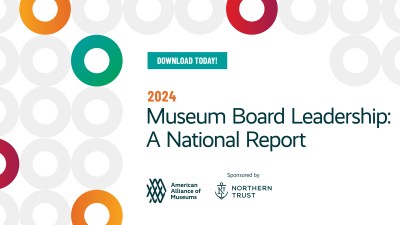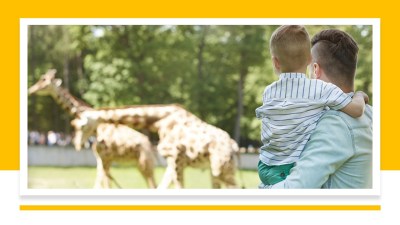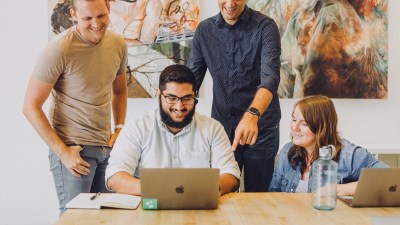
In today’s guest post, Head of Mātauranga Māori (Head of the taonga Māori collection) at Te Papa, Puawai Cairns (Ngāi Te Rangi, Ngāti Ranginui, Ngāti Pūkenga) reflects on what decolonisation means to the museum sector and what it means to her own practice as an indigenous curator.
–Elizabeth Merritt, VP Strategic Foresight & Founding Director, Center for the Future of Museums, American Alliance of Museums
Decolonisation. It’s so hot right now. There are countless blogs (of which this is yet another contribution), books, chapters, exhibitions, symposia, and conferences heavy with discussion about it. We are on a landscape littered with ideas about decolonisation, the implications of its application, and the anticipation, in my sector especially, that decolonisation is a necessary confrontation to alter museological practice for the better and rectify the wrongs of the past. It seems to be a long, uncomfortable process of self-improvement:
“Systemic change takes time, vision and nuanced leadership at every level, most especially among donors and museum boards. Selfless investment and fortitude are required. So is a willingness to endure discomfort. To move forward, the entire ecosystem must devote itself to a longer game.”
–Olga Viso, Decolonizing the Art Museum: The Next Wave
And it is with increasing frequency, indigenous colleagues and I are asked to write, travel to overseas conferences, offer advice, provoke and lead discussions, our thoughts, bodies and opinions regularly mined for insights and guidance about decolonisation. Gratifying to the ego it may be in the short term but it is not sustainable in the long-term. It’s wearying, and it prompts the questions, how different will a decolonised process or state be in comparison to how indigenous museum workers like me already operate? Is decolonisation a challenge to museums to change or is it actually a demand that indigenous people escalate their efforts for ‘the greater good’?
A few months ago I wrote a blog called “Museums are dangerous places” (republished on Spinoff Ātea). To prepare for the impending renewal of the History precinct on level 4 of Te Papa – which includes the Māori gallery, Mana Whenua –my team, the Mātauranga Māori curators, has been having a series of close, honest talks with allies and heroes from the Māori community outside of the museum. (I call the talks “Throwing fertiliser at our feet – we can grow or we can stand still and wallow in sh*t”.) The piece discussed noted Māori scholar and lawyer, Moana Jackson’s thoughts he offered to my team during his visit to Te Papa for those series of talks:
“Moana shared that his preferred term to use in place of decolonisation in Aotearoa, is “reMāorification”, to recentre Māori voices in an act of restoring Mana Motuhake (independent thought and autonomy) and privilege the various ways that Māori perceived knowledge and knowledge sharing.”
I love Moana’s term reMāorification. It has helped me make sense of what my role is in decolonisation processes in a museum. By helping me make sense of those obligations, it has given me a sense of liberation and focus. It has taken me a long time to reconcile what decolonisation required of me, first defined to me as the undoing of colonial damage to the indigenous mind, body and soul. Indeed, it was a pretty popular retort between Māori people in the 2000s who disagreed on a position to say to each other “decolonise your mind!”, implying that deconditioning of our brains would eliminate misunderstanding and reauthenticate our indigenous thinking processes. But it also implied that Māori brains were supposed to think the same, that colonisation could cause indigenous people to mistrust each other and ourselves, a colonial infection that eroded the ties between Māori people. It was an intimate invasion which held enormous power over us, and it was the basis of a profound epistemological crisis that Māori were expected to carry and confront.
I deeply resented this. Why did we – as the colonised subject – have to do all the work to repair ourselves and go through a painful and laborious process of reconstruction, while colonisation continued on its merry way (contrary to popular perception, there is no post- in colonisation)? I disliked the premise that decolonisation was a demand on me to change but not on the colonial machinery around me. But to retitle decolonisation as reMāorify means I am able to build my own sense of indigeneity around me and in my museum practice, and not spend precious energy stripping back the imaginary layers of coloniality that had supposedly tainted my psyche and my being.
I know I am not alone in cautiously reflecting on the reality of decolonisation demands and the jeopardy it brings for the colonised. My bones were stirred by the recent piece by Sumaya Kassim “The Museum will not be decolonised”, describing co-curating a challenging exhibition at the Birmingham Museum and Art Gallery, which was to be positioned as a “radical reassessment of history” and a commentary on decolonial processes:
“I don’t think they were prepared for us in practice. We were intent on drawing attention to the museum as an imperial structure that is intimately tied to systemic whiteness. We also strove to highlight how individuals reproduced institutions. In meetings, we threw out phrases like ‘white fragility’ and ‘systemic racism’ to staff who had, perhaps, never been confronted in this way. Although we were allowed creative freedom within the exhibition and were encouraged to be candid, it often felt like the price of our honesty was any future chance to work with the museum or, worse, that it might jeopardise further decolonial projects. Though we were encouraged to be upfront, we were never sure where we stood.”
The Museum Will Not Be Decolonised from Arwa A on Vimeo.
Sumaya concluded from her own experiences that the museum will not be decolonised because systemic resistance is too great, the colonial bones go too deep, and decolonising requires much more sacrifice from colonial subjects than ever before. Decolonisation becomes just another series of extractive events and engagement which doesn’t seem too dissimilar to colonisation.
Like Sumaya, I don’t want to decolonise museums either but focus on processes of reindigenising – to reMāorify the spaces where and how our stories are told. I’m not interested in rehabilitating the whole museum. Is that shocking? I don’t believe that decolonisation efforts should be diverted to merely redeem whiteness in museums. The co-option of decol as the latest trendy cultural theory and praxis by mainstream organisations run the very real danger of locking indigenous people into a death dance with colonial structures, with its demands that we work and labour until we are completely consumed.
Further applying Moana’s term reMāorification to my own practice, my role is to create more space and opportunity for Māori to tell their stories on their own terms. To ensure the system accommodates Māori ways of thinking and being but I also don’t want to recreate the museum in a Māori image. Museums are at their hearts colonial machines, why would I want to fruitlessly expend my efforts trying to deny that? But I believe we can create something that I call sovereign spaces, where Māori can be Māori, tell Māori stories with all their complications and contradictions, Māori storytellers and historians telling stories to Māori, inclusively and without apology. It means flipping the power dynamic between Māori communities and museums so that Māori see the museum as a tool they can use, and disallow the museum continuing to see Māori people – its staff and the external communities – as resources for its own benefit. .
I want to bring this conversation back to my museum and the work of my team, Mātauranga Māori – the Māori curatorial team. My colleague, Matariki Williams, Curator Mātauranga Māori, has just written a blog post following a visit to our team by our former manager, Dr Wayne Ngata, where he discussed having lines of sight in his work, connecting to the teams around us and the Māori communities that we want to speak to and with, keeping them in our own line of sight so we stay on mission. But also reiterating the requirement that reconditioning needs to happen throughout the museum and throughout its staff for true change to be realized:
“what role can museums play in society? To answer this, I go back to something Wayne said about a “continuum of engagement and relevance for Māori audiences”, suggesting that when Te Papa opened, it sat at the extreme end, being highly engaging and highly relevant to Māori. Nowadays, he suggests we sit in the middle. This is due to the place Te Papa held in an increasingly self-aware society of twenty years ago but, is it still true in this age of information saturation? Wayne asserts that museums have a role in engaging people in debates because, “He whare kōrero tonu”, we are still a site that spurs discussion.
“The museum as marae atea – He whare kōrero tonu”, by Matariki Williams, December 2018 (still be be published)
There is still a place for museums within Māori communities as they are still incredibly useful platforms for indigenous people to hold discussions and to tell their stories. But indigenous people do not need to be the saviours of entire organisations seeking redemption but which won’t truly shift radically to release power to the Other.
Indigenous curators and exhibition makers will continue to push to determine how our stories are told and not have those stories told for us. So while I don’t desire to reform the whole museum, I do want to see more sophisticated narratives about the multiple lived experiences of what it is to be Māori – authored by Māori. I want to see insightful interrogations into what decolonisation looks like to an indigenous person and an indigenous community – as declared by indigenous communities. These are important conversations to be had within the museum, because as the quote above states: “He Whare kōrero tonu”– “we are still a site that spurs discussion”. But decolonisation processes will hopefully ensure that the immediate benefits of those conversations are for the community and not for the institution. That we won’t continue to be spoken about in third person. This will be my version of decolonisation. Putting the people at the centre, and not the interests of the colonial machine.
Skip over related stories to continue reading article








Comments